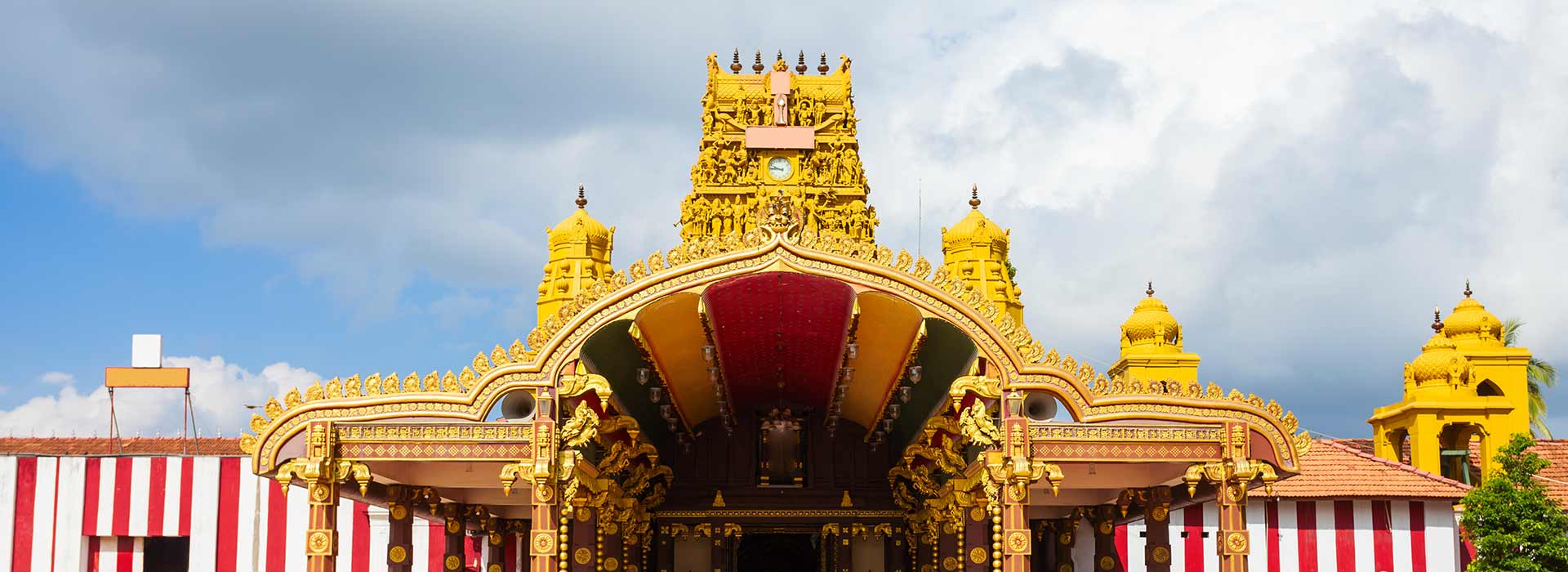
Nallur
Situated about 3km from Jaffna town is the Nallur Kandaswamy Kovil, one of the most significant kovils in Sri Lanka. The 15th-century kovil, dedicated to Lord Murugan, the god of war, love, and beauty, boasts grand arches and vibrant hues as part of its enthralling Dravidian architecture.
Highlighting Features
The golden pillars shine brightly amidst the arid landscape, standing tall at the kovil’s entrance. As you walk through the arch, you’ll be welcomed by a high-ceilinged and spacious hall. The central mulasthanam (shrine) is where you’ll find the prominent statue of Lord Murugan, with statues of many other major deities in its company.
An Ancient Place of Worship
The foundation for the kovil was laid in 948 AD, but due to constant invasion by foreign forces, the location of the temple moved around multiple times within Nallur. The temple was finally established in the 13th century by Puvenaya Baku, a minister to the then King of Jaffna, Kalinga Magha.
Significance and Festivities
The temple holds both religious and social significance for its Tamil-majority Hindu devotees, to the extent that kovils have been built across the world and carry the same name as the Nallur Kandaswamy Kovil in honor of it.
Every year, the kovil hosts a festival (usually during the full moon in August). The festival, which starts off with a flag-hoisting ceremony, carries on for 25 days. During these days, devotees can be spotted having their bodies pierced with hooks, exhibiting no pain in response, an act of faith that is a fundamental part of their religious beliefs.
Prior to entering the kovil, all visitors are required to cleanse themselves and be dressed inappropriate attire. For men, this includes either pants or sarongs that cover their legs, whereas the upper body should be bare. Women are to wear something long that covers their legs, and the same for their upper bodies, with tank tops and the likes being prohibited. No footwear is allowed within the temple’s premises.
